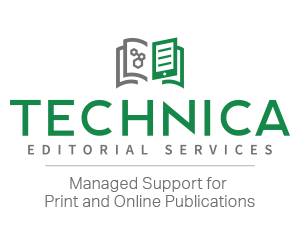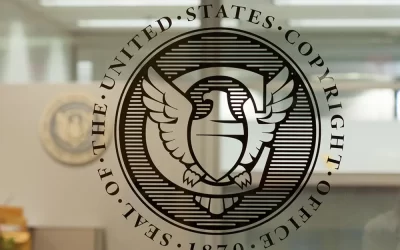One of the aspects I love most about the publishing industry is the diverse group of professional backgrounds that it attracts. A number of my colleagues were English majors, but there are also plenty of publishing experts who studied history, journalism, or language arts. I even know several people in my line of work who have backgrounds in the sciences, particularly chemistry and biology, which makes sense in the scholarly publishing field, because many of the papers being edited are for scientific journals.
Even with the vast variety of backgrounds and college majors, I haven’t met a huge number of publishers who earned their degrees in Communication Studies, as I did; there are a few of us, but it’s not one of the more heavily represented fields. In fact, when I tell people what my college major was and what I do for a career, they often tell me that the communication studies major is not one that they would have expected to lead to a career in publishing.
This surprises me because effective communication is absolutely critical to the publishing process; not only that, but it’s also critical to the processes of editing/copyediting, writing, networking with others in the writing field, etc. Every minute of every day, those in my line of work are, whether intentionally or not, communicating with numerous people: authors, editors, reviewers, editorial assistants — the list goes on and on.
The thing that many people outside of the industry don’t realize is that communicating with these folks is far more complicated than just composing an email and clicking the send button or leaving a 30-second voicemail on an answering machine. Every single message that is sent has an impact and so requires a deep — and sometimes complicated — thought process.
One of the main reasons effective communication is so critical in scholarly publishing is the global nature of the work. Language barriers often exist between publishers and authors or editors. Many of the most renowned writers and editors in the finance and science realms are not native English speakers. Even “simple” instructions can create major roadblocks.
Let’s say, for instance, that a manuscript is ready to be accepted as far as content is concerned, and all stylistic elements are in place—except for one thing: the title of the manuscript must be in title case to adhere to the journal’s guidelines. Unfortunately, the manuscript is in PDF or other locked format, so an editorial assistant is unable to easily make the simple change. The quickest option is to send an email to the author to request the change.
If the author is a native or fluent English speaker, this is easy. However, if the author is, for instance, Chinese or Japanese, the communication is more challenging. Approaching your correspondence thoughtfully can help. The author might not fully understand an email that reads, “The title of your manuscript must be in title case. Please make this change and send your manuscript back to me.” The author may need to seek the help of a translator, who in turn might not be familiar with editorial jargon. Translation could take days or even weeks, adding an unnecessary delay to the manuscript’s acceptance date. When this happens over and over again, it significantly — and negatively —impacts the journal’s average time-to-acceptance rate, which puts that publication at a serious disadvantage.
If, however, the editorial assistant takes a thoughtful approach to communication, that extra delay could be avoided. For example, a well-considered email might read: “The title of your manuscript must be in title case. The first letters of all words in the manuscript’s title must be capitalized. The first letters of all parts of any hyphenated words should be capitalized. No other letters should be capitalized. Please send me a new manuscript, making sure the first letters (and only the first letters) of all words in the title are capitalized.” Including an example is always helpful.
This hypothetical email is much more specific (longer, yes, but more specific) and, if you’re not a native English speaker, it’s much easier to understand than the first. It may seem like an extra step, but it’s an action that might be very important if you’re talking about time to acceptance.
Even if the person at the other end does speak English as a first language, word choice can never be taken lightly because the overwhelming majority of correspondence is done via the Internet. When it comes to email as a mode of communication, choosing words with caution is crucial (regardless of whether the email is a professional one or not), since normal non-verbal cues that are apparent in face-to-face conversation aren’t there. In a publication context, a message to an author or editor that was intended to be courteous might be unintentionally interpreted as rude if you’re not careful.
Here’s an example: An editorial assistant is looking for reviewers for a manuscript. The goal is to find three — enough to provide a substantial set of critiques, but not so many that time is wasted waiting for everyone to return their comments. Still, as every editorial assistant knows, it’s necessary to invite more than three potential reviewers, because, unavoidably, some won’t be available.
Let’s say, for the purposes of this scenario, that invitations were sent to six potential reviewers, and after three days, three of those reviewers agreed to submit a report and one person declined. The other two invitations have not yet received a reply. In order to expedite the review process and to reduce the burden on the outstanding reviewers, who have busy schedules as it is, the editor may decide that it’s best to close the remaining invitations. The editorial assistant might send the following email message to the outstanding reviewers: “A sufficient number of referees have now agreed to review this manuscript. We thank you very much for your time.”
On the surface, this message seems cordial enough. A potential reviewer, however, might read it as rude. She might take it to mean that her opinion about the manuscript is not needed because it is not valued. While certainly not done on purpose, this can permanently damage the relationship between the editor and the reviewer, and, oftentimes, the editor and the reviewer know one another, so this damaged relationship might go well beyond the journal operations.
Again, the key to preventing this kind of fiasco is effective communication and careful word choice. It’s the editorial assistant’s responsibility to craft a message that gets the point across, while simultaneously maintaining the efficiency of the review process, and allowing the potential reviewer to know that her expert input, while not necessarily needed for one particular manuscript, is always valued. A message like this might work: “At this stage, a sufficient number of referees have agreed to submit comments for the manuscript we invited you to review earlier this week. We are now excusing these reviewers who have yet to respond to our invitation. However, if you still wish to review this manuscript, we would very much value your expert opinion about its suitability for publication. Please let me know as soon as possible if this is the case. We thank you very much in advance for your help, and we sincerely hope that you will be able to review for future manuscripts.”
This message, unlike the first one, takes into account the feelings of the potential reviewer, in addition to the editor and journal’s need to complete the review process as efficiently as possible.
While email has easily become the most frequently used mode of communication in the publishing industry, other methods — such as telephone conversations, fax messages, and even the occasional “snail mail” message or face-to-face meeting — are still useful. Consequently, these methods also come with their own etiquette guidelines that may seem trivial at first glance, but are, in reality, vital.
Take, for instance, authors and reviewers whose deadlines have passed but are still unresponsive to (sometimes numerous) email reminders. In this case, the next step is usually a phone call. It’s easy to get frustrated in this type of situation where a tardy author — and, as a result, a missed deadline or delayed article/manuscript — adds pressure to an already-busy editorial assistant. It’s also easy for this frustration to show in a phone conversation. For this reason, it’s important to rehearse the conversation prior to dialing that number. If it helps to write out notes, go ahead.
If a magazine article writer hears on the other end of the phone, “Your article is 10 days late, and it won’t run if we don’t have it by Friday,” she might become annoyed by your insensitive tone and decide it’s not worth the trouble to get it done within the allotted time limit. The editorial assistant, now lacking the content necessary to fill up the magazine’s page count, is in even more trouble than before.
Let’s say, however, that the author instead hears this: “We always appreciate your work for the magazine, and I just wanted to remind you that your article for the upcoming issue is 10 days late. We’ll need it by Friday for it to run in the upcoming issue, but if we don’t have it by then, we can hold it for the next issue.” I can’t speak for all authors, but I’d be much more likely to respond quickly and positively to the second call than to the first.
Publishers also use telephone calls, along with face-to-face meetings, to both “meet” and train clients. Again, planning out the conversation can — and often does — make the phone call and the actual business relationship much more pleasant.
First of all, beginning the discussion with a few minutes of lighthearted (but still business-related) banter can be an effective icebreaker. Take time to ask the client about her academic interests and background, why and how she began work in her particular field, etc. If the client seems interested, don’t be afraid to provide the same sort of information about yourself. This isn’t unprofessional, rather, it’s a way to remind your client that she is dealing with an actual human being and not just some automated process.
When the meeting involves training, it’s especially important to remember that just because you might be knowledgeable about something does not necessarily mean your client will be as well. On numerous occasions, I have trained editors via phone on software systems that I use on a daily basis but that are completely new to my clients. The key is to remember that you are the teacher and the trainee is the student — an intelligent student, but still one who may need certain things explained multiple times. Don’t go too quickly and check in frequently.
While the communication field is perhaps not the most heavily represented one in the publication industry, effective communication can mean the difference between a healthy business relationship and a disaster when it comes to the publishing process. Distance often puts a roadblock into the line of communication—authors and editors may be literally thousands of miles, and, consequently, several time zones, away from the publisher and the editorial assistant. For this reason, I challenge all of my readers who work in publishing, whether you studied communication in college or not, to spend at least five full minutes planning out your next email or phone call to an author, editor, or client. It’s an exercise that requires a small investment, but it’s well worth it—and I don’t think your clients at the other end of the pipeline will disagree.
It is acknowledged that this article was originally published in the June 2015 issue of the International Society of Managing and Technical Editor’s (ISMTE) Editorial Office News and republished with their permission. This paper is intended for review and comments only. It is not intended for citation, quotation, or other use in any form. All citation and quotation should be attributed to the article’s original publisher.




